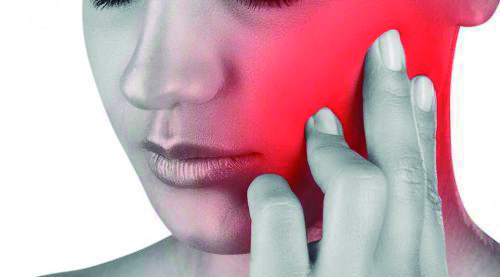Los tumores y quistes mandibulares son crecimientos o lesiones que se forman en la mandíbula o en los tejidos blandos de la boca y la cara. Un tumor es un crecimiento o masa anormal de tejido. Un quiste es una lesión que contiene material líquido o semisólido.
En ocasiones, los quistes y tumores mandibulares se denominan quistes odontogénicos y pueden variar mucho en tamaño y gravedad. Por lo general, son benignos pero pueden ser agresivos e invadir los huesos y tejidos circundantes así como a los dientes.
Las opciones de tratamiento para los tumores y quistes mandibulares varían según el tipo de crecimiento y lesión, la etapa de crecimiento y los síntomas. Los cirujanos de boca, mandíbula y cara pueden tratar el tumor o quiste mediante cirugía, tratamiento farmacológico o combinando ambos.
Tipos de tumores y quistes
Existen muchos tipos de tumores y quistes mandibulares, algunos de ellos son:
Es un tumor relativamente común, de crecimiento lento y generalmente no canceroso. Con mayor frecuencia se produce en la mandíbula, en la zona cercana a los molares. Puede invadir estructuras locales como el hueso y el tejido blando.
Este tumor puede reproducirse después del tratamiento. Sin embargo, si se emplea un tratamiento quirúrgico más agresivo, la posibilidad de recurrencia es menor.
Lee también: Dolor mandibular: 3 claves importantes que debes conocer
Granuloma central de células gigantes
El granuloma central es una lesión benigna que se suele localizar en la parte frontal de la mandíbula inferior. Algunos de estos tumores crecen muy rápido y, además de producir dolor, pueden llegar a destruir los huesos.
Los granulomas centrales se caracterizan por su tendencia a ser recurrentes después del tratamiento quirúrgico.
Este quiste se origina en el tejido que rodea los dientes antes de que brote en la boca. Afecta a las mandíbulas con mayor frecuencia. Por lo general, se producen alrededor de las muelas del juicio que aún no han salido, aunque también pueden afectar a otros dientes.
Queratoquiste odontogénico
También es conocido como tumor odontogénico queratoquístico debido a su tendencia a recurrir después del tratamiento quirurgíco. Es un quiste benigno de crecimiento lento pero que puede ser destructivo para las estructuras locales.
Generalmente, se desarrolla en la mandíbula inferior cerca de los terceros molares. Estos quistes también se pueden presentar en personas con una afección hereditaria llamada síndrome de carcinoma nevoide de células basales.
Mixoma odontogénico
El mixoma es otro tumor benigno, poco común y de crecimiento lento que se desarrolla con frecuencia en la mandíbula inferior. Puede ser grande y llegar a invadir de forma agresiva la mandíbula, el tejido de alrededor e incluso puede desplazar los dientes.
También son susceptibles de que haya recidiva después del tratamiento quirúrgico.
Odontoma
Se trata del tumor odontogénico más frecuente. Los odontomas a menudo no desencadenan síntomas, pero pueden interferir con el desarrollo de los dientes.
Este tipo de tumores están formados por tejido dental que se forma alrededor de un diente en la mandíbula. Pueden tener aspecto de diente y también pueden ser tumores calcificados pequeños o grandes.
Mandibular tumors and cysts are growths or lesions that form in the jaw or in the soft tissues of the mouth and face. A tumor is an abnormal growth or mass of tissue. A cyst is an injury that contains liquid or semi-solid material.
Occasionally, mandibular cysts and tumors are called odontogenic cysts and can vary greatly in size and severity. They are usually benign but can be aggressive and invade the surrounding bones and tissues as well as the teeth.
Treatment options for tumors and mandibular cysts vary according to the type of growth and injury, the stage of growth and symptoms. Surgeons of the mouth, jaw and face can treat the tumor or cyst by surgery, pharmacological treatment or by combining both.
Types of tumors and cysts
There are many types of tumors and mandibular cysts, some of them are:
It is a relatively common tumor, of slow growth and generally not cancerous. It most often occurs in the jaw, in the area near the molars. It can invade local structures such as bone and soft tissue.
This tumor can reproduce after treatment. However, if a more aggressive surgical treatment is used, the possibility of recurrence is lower.
Read also: Mandibular pain: 3 important keys you should know
Central giant cell granuloma
The central granuloma is a benign lesion that is usually located in the front part of the lower jaw. Some of these tumors grow very fast and, in addition to producing pain, can destroy the bones.
Central granulomas are characterized by their tendency to be recurrent after surgical treatment.
This cyst originates in the tissue that surrounds the teeth before it erupts in the mouth. It affects the jaws more frequently. They usually occur around wisdom teeth that have not come out yet, although they can also affect other teeth.
Odontogenic keratocyst
It is also known as a keratocyst odontogenic tumor due to its tendency to recur after surgical treatment. It is a benign cyst that grows slowly but can be destructive to local structures.
Generally, it develops in the lower jaw near the third molars. These cysts can also occur in people with an inherited condition called basal cell nevoid carcinoma syndrome.
Odontogenic myxoma
Myxoma is another benign, uncommon, slow-growing tumor that often develops in the lower jaw. It can be large and invade the jaw, the surrounding tissue and can even move the teeth.
They are also susceptible to recurrence after surgical treatment.
Odontoma
It is the most frequent odontogenic tumor. Odontomas often do not trigger symptoms, but they can interfere with the development of the teeth.
These types of tumors are formed by dental tissue that forms around a tooth in the jaw. They can look like teeth and can also be small or large calcified tumors.

